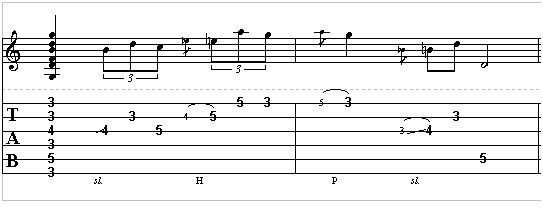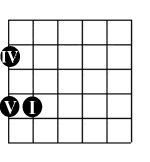To play a turnaround over a more complicated progression that uses a variety of different chords in the last two bars, the most important thing to remember is to ensure that the tonality of each chord is preserved by hitting notes from the chord as they are played in the progression. To illustrate this, turnaround 3J is a simple slow blues turnaround in G over an I – IV – I – V chord sequence used by Eric Clapton in ‘Outside Woman Blues’.
In bar 11, he reinforces the G7 chord established on beat 1 by sliding into B (3rd of G) on the G string on beat 2 and establishes the C9 chord by hitting C on the B string on beat 3. In bar 12, he re-establishes the G7 chord by quickly pulling off from A to G on the high e string and finally establishes the D7+9 chord by hitting D on beat 3.
This may sound technical and confusing to some, but keep in mind that turnarounds are going to use the I, IV, V chords. It’s easy to find the right note to play once you establish what the chord progression is.
The diagrams we used in chapter one will help you to locate the notes. You can plainly see where the IV and V chords are in relation to the I chord:


